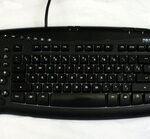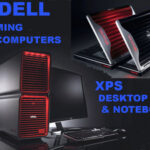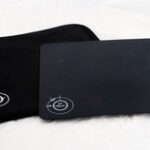Building a desktop computer sounds like a difficult task but in reality is not really that hard. If you build your own computer you will be in control of its performance. You can build something extreme like a blistering fast gaming machine or a multimedia center computer for watching movies. While you can save money building your own computer you need to do some comparison shopping for the components. The chances of one company having all the components at the best price is highly unlikely.
Computer case and power supply
The first thing to look for is a case. There are two common types of desktop cases. The mid tower and the full tower. The full tower is larger to accommodate more and or larger components. Some cases come with power supplies. While this is convenient it might not be the best way to get a power supply. There are a few factors you must consider when choosing a power supply. Wattage is the #1 factor in choosing a power supply. The wattage draw of all your components added together is the absolute minimum wattage you need to run your computer. You should add a bit more wattage capacity in case you add components in the future. Another consideration when choosing a power supply is matching it to your motherboard. Power supply specifications will spell out the types of motherboards they will be compatible with. When choosing a case be sure to get all the fans that are needed.
Motherboards
Motherboards come in many speeds and form factors. Form factor is basically size, design and features. The most common motherboards today are standard ATX and micro ATX. The main differences in the two are the amount of slots for expansion cards. A standard ATX motherboard is a good choice as you will be able to add more memory and other add on cards. Some Standard ATX boards will also allow you to add more than one video card which will give you more graphics processing. This is called SLI technology. With SLI you will be able to add 2, 3 or even 4 video cards.
Processors
Processors (also known as central processing unit) are the heart of the computer and carry out all of the computers functions. This is one component you should be sure is up to the task. Most computers today have dual or quad core processors to handle running numerous programs simultaneously without slowing down.. That is the equivalent of having 2 to four processors. Whatever processor you choose be sure to get a cooling fan.
Optical Drives
Drives that use removable media like cd’s or dvd’s are called optical drives. Optical because they read and write using a laser. Today all computers should have a DVD player. They are backward compatible and will also run cd or cdrw discs. The recent blue ray drives will store large amounts of data and will also run high definition video.
Hard drives are basically just storage but they do in fact have a lot to do with computer speed. They come in different spin up speeds of 5,400rpm, 7,200rpm and 10,000rpm. As a general rule the faster a hard drive spins the faster it can seek information. That said they have recently developed solid state hard drives that have no moving parts. Some of these are even faster at accessing data. There are two connection types for hard drives and optical drives. sata and ide. As a general rule sata drives are much faster at moving data.
Memory
Memory or ram (random access memory) is an ever changing computer component. It’s a good idea to use as much memory as you can depending on the amount of slots on the motherboard. Memory speed depends on the specifications of the motherboard. Always choose the fastest speed your motherboard will support.
Video cards
Video card(s) do the actual graphics processing. In choosing video cards you need to look at motherboard documentation and use cards that are compatible. Some motherboards have graphics or video controllers integrated on the motherboard. This is normally the least desirable video option. Add in video cards are always a much better way to go especially if you need lots of video processing.
Audio
Most motherboards have integrated audio but if you want to go a step above the norm you can opt to add a audio card. This will give you many more audio options. Again you need to see which cards are compatible with your motherboard by checking your documentation..
Assembly
When assembling the computer install the processor on the motherboard first. Be sure to follow the mounting instructions that came with your processor. Then mount the motherboard into the case following the instructions that came with the board exactly. Next mount the hard drive and optical drives. Following the motherboard instructions plug in the connectors from each component as you go. All the plugs are marked on the connectors as well as on the motherboard. Next plug in all your add on cards. Last add the power supply and fans and install all the plugs.
Building your own computer is something that most people can do fairly easily. You do not need any technical training whatsoever. If you can read you can build your own computer. The only technical terms you need to know are the few that are in this article. If you have all the necessary parts you can easily build the computer in less than one day. Don’t forget to buy an operating system. Good luck!





